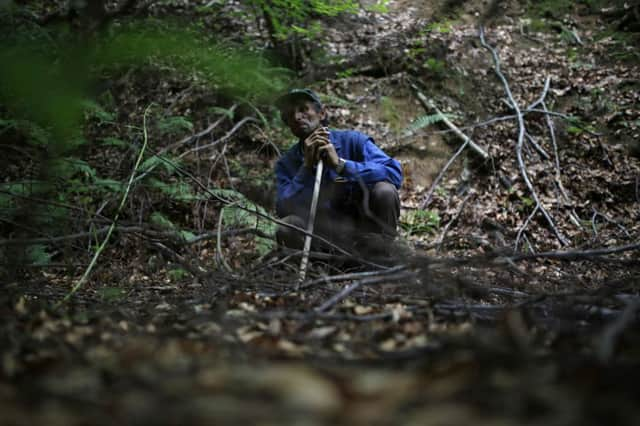Srebrenica killing fields slowly give up the dead


There’s rarely a day in which he does not find the remains of at least one murdered boy or man, even 20 years after Europe’s worst massacre since the Second World War. Srebrenica’s killing fields swallowed up 8,000 bodies, and the murderers took pains to hide evidence of the genocide.
Mr Nukic’s quest started in 1999 after he returned to his empty hometown of Kamenice and began looking for the remains of his murdered father and younger brother. As the family’s only male massacre survivor, he became obsessed with bringing closure to their loss.
Advertisement
Hide AdAdvertisement
Hide AdEvery day he discovered bones that gave other families the gift of mourning, but not his own. Every day he kept trying, and quietly he built up an astonishing record: Nukic’s discoveries have allowed Bosnia’s Institute for Missing Persons to identify nearly 300 Srebrenica victims.
But his father and brother eluded him.
Srebrenica was a Muslim town besieged by Serb forces in Bosnia’s 1992-95 ethnic war, in which Serbs tried to wrest away territory from Bosnian Muslims and Croats to form their own state. Serb troops led by General Ratko Mladic, who is on trial in The Hague on genocide charges , overran the enclave in July 1995 and some 15,000 Srebrenica men fled into the mountains.
The rest of the population, some 25,000 people, sought protection from Dutch UN peacekeepers stationed at the suburb of Potocari. But the outnumbered Blue Helmets could only watch as Serb troops occupied their base and separated men and boys from women, and loaded the males on buses and trucks. They slaughtered some 2,000 men and boys straightaway on 11 July, 1995. Then they hunted down and killed 6,000 more who fled into the forests.
More than 7,000 bodies of victims have been found in 93 mass graves and 314 surface sites throughout north-eastern Bosnia. Another 1,000 people are still missing.
As the massacre unfolded, Mr Nukic said goodbye to his wife and children in front of the UN base, and disappeared into the woods with his father and brother, joining other fleeing Srebrenica men.
But the Serbs set ambushes along their path. As the Bosnian Muslim men sat down to rest on a hill just above Mr Nukic’s village, Serb guns and tanks suddenly fired on the group. About 1,000 were killed on the spot – including Mr Nukic’s father and brother. He survived because he hid. Knowing the terrain, he managed to sneak away and eventually find his wife and children in a refugee camp.
Mr Nukic returned to his empty village in 1999 and gathered courage to climb up the hill where his loved ones died. The sight that greeted him froze his blood.
“When I saw those clothes and shoes scattered around the site,” he said, “I went numb.”
He found three complete skeletons at his feet
Advertisement
Hide AdAdvertisement
Hide AdFrom then on, Mr Nukic searched the woods every day, overturning branches and leaves, hoping to find his father and brother. But there was no way to tell who he found.
“A bone is a bone,” he said. “You do not know who it belongs to.”
Each time he discovered bones he contacted the Institute for Missing Persons, which took away the remains to identify through DNA analysis.
“I rarely return home empty-handed,” he said.